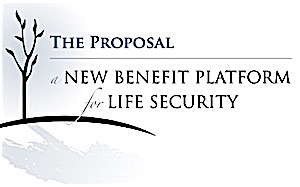
The Retirement Enhancement and Savings Act of 2018 (RESA), the subject of an ongoing series in RIJ, could enable a type of 401(k) plan where many unrelated employers could join a single “open multiple employer plan” or “pooled employer plan.”
In these “open MEPs” or PEPs, employers would cede direct plan sponsorship to teams of recordkeepers, investment advisors, asset managers and professional fiduciaries. Such a shift, it has been argued, could reduce the burden of costs, chores, complexities, and legal liabilities that employers shoulder when sponsoring tax-deferred workplace savings plans under the Employee Retirement Income Security Act of 1974 (ERISA).
If that burden were lighter or lifted entirely, some argue, more employers would offer plans and more Americans could save for retirement. Tens of millions of workers at small companies—including many minority and low-income workers—don’t currently have access to a retirement savings plan at work. If there is a retirement “crisis” in America today, it is concentrated among these workers (and single women).
Others see danger in excusing employers from the role of primary watchdog over employee savings. Still others see a switch in sponsorship roles from employers to large financial services companies as a potential driver of consolidation of 401(k) industry, with unforeseen winners and losers. The situation is complex, murky and still evolving.
For many large employers and plan providers, the transfer of the sponsorship role away from employers through multi-employer arrangements is a dream long deferred. “MEPs [multiple employer plans] have been around since before ERISA,” Jack Towarnicky, executive director of the Plan Sponsor Council of America, told RIJ recently.
In 2007, for instance, the ERISA Industry Committee (ERIC), a group representing the employee benefit plans of America’s biggest employers, published a bold proposal for a “New Benefits Platform” that would reduce inefficiencies due to fragmentation, relieve employers of benefits burdens, and bless all employers, regardless of size, with economies of scale.
ERIC envisioned a new class of private plan sponsors, called Benefits Administrators. These all-in-one administrators would deliver “Life Security Plans” (LSPs) consisting of health, retirement and other pooled benefits or insurance products, directly to employers or individuals.
A Benefits Administrator would be, according to ERIC:
“A trusted intermediary with significant expertise in designing, delivering, and managing retirement and short-term savings benefits, and health plans. Benefit Administrators could be direct providers or assemblers of affiliated providers. The Benefit Administrator would be the individual’s point of entry to access the retirement and health care benefits system, and the entity through which any purchaser (individual or employer) could purchase benefits.”
Further, the “core structure” of Life Security Plans would contain these elements:
- Establishment of Uniform Service Areas in the United States. The federal government would establish uniform service areas for each of the LSP’s core benefits.
- Establishment of Uniform National Standards. To simplify administration, the federal government would establish uniform national standards for benefits included in the LSP.
- Employer’s Role in LSP is Voluntary. The LSP system should not be wholly dependent on the employer community. Employers would have the option of establishing formal relationships with one or more Benefit Administrators for their employees and their families.
- Assignment of Fiduciary or “Contract” Responsibility. ERISA sets forth responsibility for ensuring that plan sponsors fulfill their benefit promises and responsibly manage plan assets. Under the new structure, the competing Benefits Administrators and their affiliates would assume the appropriate “fiduciary” or contract liability associated with the benefits they provide.
- Uniform Tax Treatment for Retirement, Health and Other Benefits. Similar to current law, the federal government would establish favorable tax treatment for retirement, health, and other benefit savings. Employers would maintain the tax treatment they have in the current system.
- Simplified Nondiscrimination Rules. Current complicated rules would be replaced with simplified standards. This would include benefit-based, “safe-harbor” designs to encourage broad-based availability of benefits.
- Participant Advocate: Each Benefit Administrator would maintain an independent office of participant advocacy responsible for serving as an ombudsman for individual participants.
- Additional Benefits. Competing Benefit Administrators will be free to offer optional benefits outside of the LSP’s core benefits.
- Administrative Efficiencies. Resulting from common benefit structures, combined retirement and health benefits and simplified communications and benefit processing.
That specific proposal, like so many other initiatives (and companies), more or less disappeared under the rubble of the Great Recession. When these ideas were raised again a few years later, they ran into resistance from the Obama administration’s Department of Labor, which believed that employers should bear direct fiduciary responsibility for plans because profit-seeking providers were potentially too conflicted.
But the spirit of ERIC’s proposal lived on among those who believe that a) getting more small employers to offer 401(k) plans will solve much of America’s retirement savings shortfall problem, and b) reducing small employers’ financial, administrative and legal burdens will make that happen.
Next week: The financial service companies, including Prudential, State Street Global Advisors, and Transamerica, that are leading the campaign for provider-sponsored 401(k) plans.
© 2018 RIJ Publishing LLC. All rights reserved.

